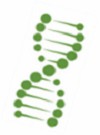Algal Reactive Oxygen Species Analysis Service
Both ROS (Reactive Oxygen Species) play an important role in signaling and cellular adaptation to stress, helping cells to adapt in time to unfavorable conditions such as oxidative and drought stress, pathogen infection, or photo-oxidative damage.
With many years of experience in algal research and analysis, Lifeasible provides quality algal reactive oxygen species analysis services to our customers worldwide.
Generation of Reactive Oxygen Species
ROS are produced in chloroplasts, peroxisomes, cell membranes, and mitochondria as a by-product of respiration. ROS are produced in the thylakoid membrane when light absorption exceeds the requirements of the photosynthetic apparatus. Photosystem I (PSI) is the most important source of ROS production because its substrate side of the thylakoid membrane completes the electron transfer. PSII causes ROS production when the electron transport chain between the excitation energy transfer to the PSII reaction center and the photosystem is restricted.
ROS Signaling in Algae
Low concentrations of ROS have an important role in defense against infection, cell signaling, and apoptosis. O2.−, HO−, and H2O2 have more signaling ability because they can be transferred to the membrane via aquaporins. ROS has an important role in resistance under oxidative stress through post-translational changes. Several families of mitogen-activated protein kinases, such as extracellular signal-regulated kinases, JNK, and p38 function in cellular processes including proliferation, differentiation, and apoptosis regulated by ROS.
Oxidative Damage in Algae
ROS can cause damage to cellular components in a high concentration through lipid peroxidation, oxidation of proteins, and destruction of nucleic acids.

Lipid Peroxidation
Lipids, key components of membranes, are major targets of ROS. Lipid peroxidation is caused by the removal of hydrogen from the unsaturated chains of fatty acids, a process that produces several types of cytotoxic products such as malondialdehyde (MDA) and aldehydes.

Oxidation of Proteins
ROS causes the oxidation of amino acids, changes the charge of proteins, peptide chain breaks, protein cross-linking, and increases susceptibility to proteolysis by proteases. Proteins containing sulfur amino acids or thiol groups, such as cysteine and methionine residues, are targets of ROS.

Oxidation of DNA
Hydroxyl radicals attack the bases and saccharides in DNA, leading to saccharide and strand breaks. ROS causes changes in DNA bases, for example, thymine and guanine residues in DNA can be hydroxylated or degraded. Oxidation of thymine residues prevents DNA replication.
Our Services
When exposed to stress caused by various factors, such as heavy metals, temperature, or high salt levels, the balance of ROS in algal cells is altered, leading to a series of changes in metabolic processes associated with stress adaptation, development, or programmed cell death.
As a professional platform for algae research and analysis, Lifeasible provides quality algal reactive oxygen species analysis services through a variety of testing and analysis methods.
- Spin Trapping
- Chemiluminescent Probes
- Superoxide Detection by Cytochrome C
- Electrochemical Sensors
- Fluorescent Protein-Based Redox Probes
- Fluorescent Probes
- Dihydroethidium (DHE) and MitoSOX Fluorescence
- Dichlorodihydrofluorescein (DCFH-DA) Fluorescence
- Dihydroergotamines (DHR) Fluorescence
- Amplex Red
Why Choose Us

Lifeasible can provide high-quality, reliable, and efficient algal reactive oxygen species analysis services to our customers nationwide. Please contact us for more information.
Our services are for research use only and not for any clinical use.